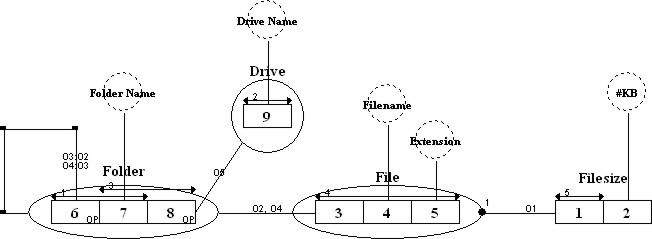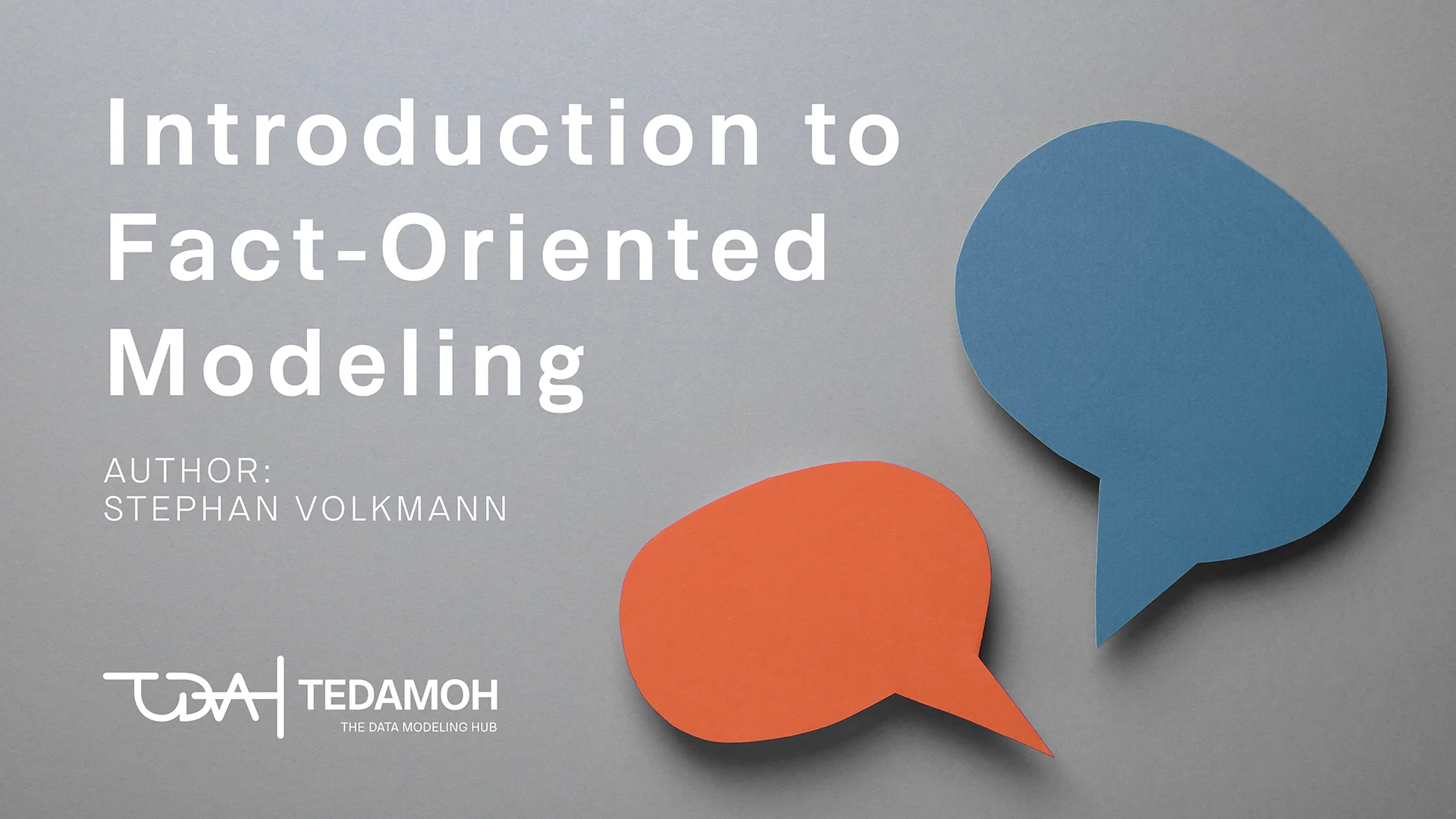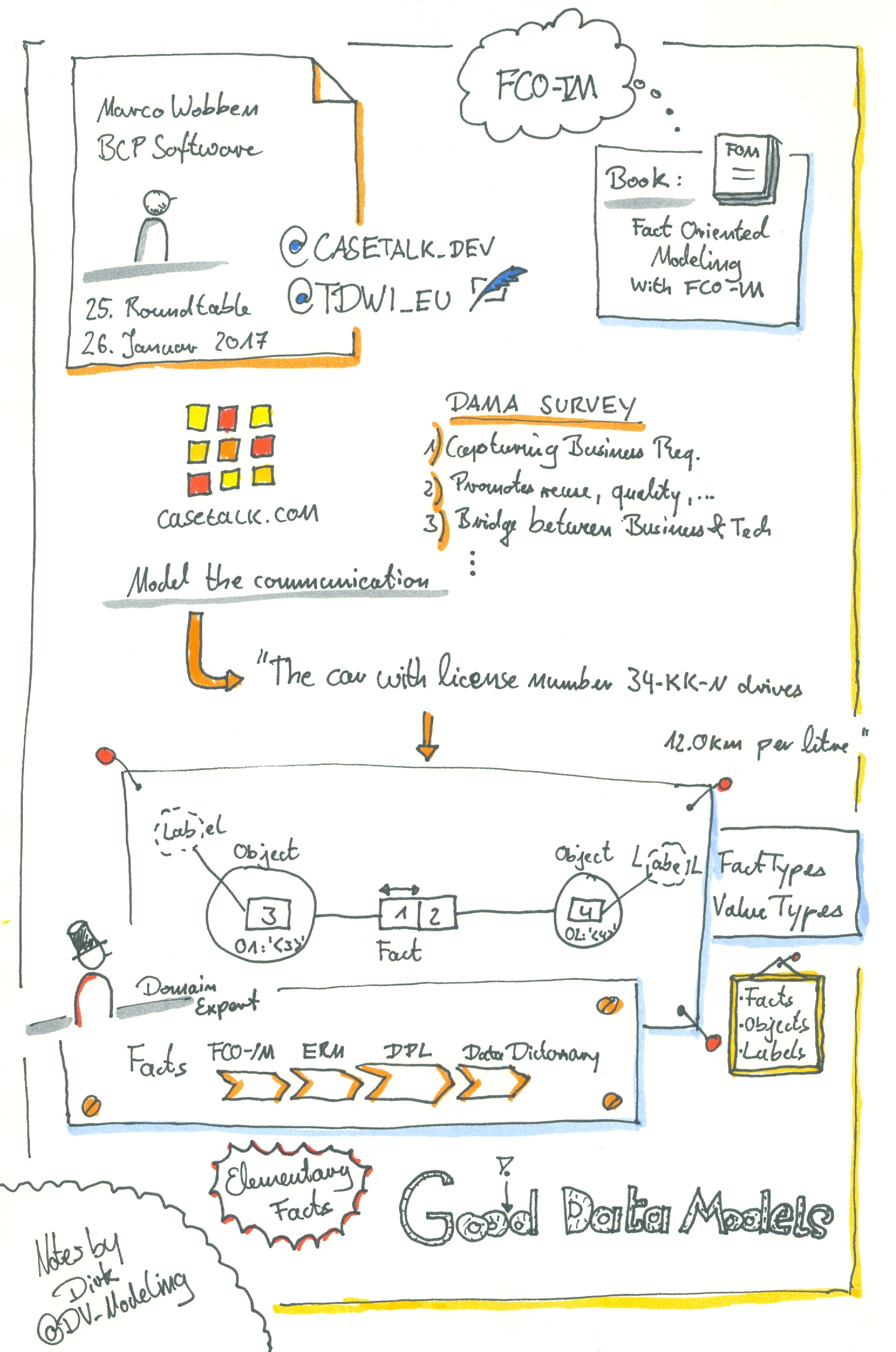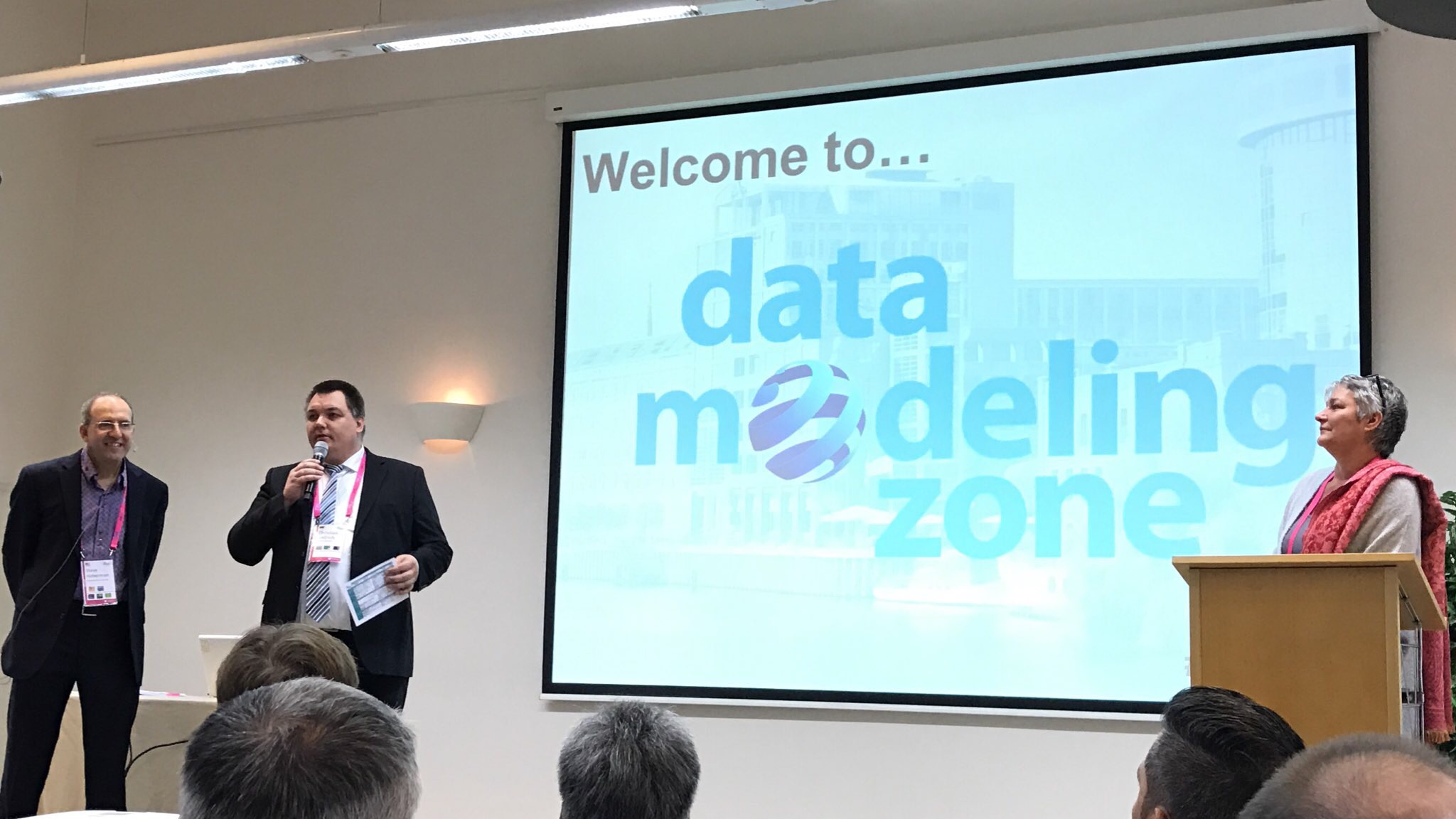FCO-IM
-
Einführung in Fact-Oriented Modeling

Wie kann ich natürliche Sprache in meinem Modellierungsprozess verwenden, um qualitativ hochwertige Informationsmodelle zu erstellen?
-
Fact-Oriented Modeling (FOM) - Family, History and Differences

Months ago I talked to Stephan Volkmann, the student I mentor, about possibilities to write a seminar paper. One suggestion was to write about Information Modeling, namely FCO-IM, ORM2 and NIAM, siblings of the Fact-Orietented Modeling (FOM) family. In my opinion, FOM is the most powerful technique for building conceptual information models, as I wrote in a previous blogpost Sketch Notes Reflections at TDWI Roundtable with FCO-IM.
-
FCO-IM at TDWI Roundtable

FCO-IM - Data Modeling by Example
Do You want to visit a presentation about Fully Communication Oriented Information Modeling (FCO-IM) in Frankfurt?
I’m very proud that we, the board of the TDWI Roundtable FFM, could win Marco Wobben to speak about FCO-IM. In my opinion, it’s one of the most powerful technique for building conceptual information models. And the best is, that such models can be automatically transformed into ERM, UML, Relational or Dimensional models and much more. So we can gain more wisdom in data modeling at all.But, what is information modeling? Information modeling is making a model of the language used to communicate about some specific domain of business in a more or less fixed way. This involved not only the words used but also typical phrases and patterns that combine these words into meaningful standard statements about the domain [3].
-
FOM
Fact-Oriented Modeling (FOM) stands for a family of fact-oriented conceptual modeling methods. FOM facilitates easier communication about the conceptual model between the modeler and the domain expert by verbalization of concrete examples in the language of the domain expert, a design process as a guide for creating the model and the focus on elementary facts. The most popular methods in this family are Cognition Enhanced Natural Language Information Analysis Method (CogNIAM), Second Generation Object Role Modeling (ORM 2) and Fully Communication Oriented Information Modeling (FCO-IM).
-
Introduction to Fact-Oriented Modeling

How can I use natural language in my modeling process to achieve high-quality information models?
-
Knowledge Gap 2020

I, Stephan, am very happy that I'm invited to give a presentation at the Knowledge Gap 2020 in Munich.
My presentation is about advanced techniques in Fact-Oriented Modeling.
Often data models are built with a technical focus, because they need to be delivered fast or must meet various technical requirements. Therefore, the business aspect and the meaning of objects and relationships are swept under the table. But then the business domain later hardly understands the data model and has problems to work with it in own applications or reports – which often results in a redesign of the data model and renewed time and cost expenditures.
-
Look Back Over DMZ
I was at the Data Modeling Zone Europe 2016 in Berlin as a speaker. It was the 4th Data Modeling Zone in Europe and in my opinion one of the best per the conference program and the interesting and awesome chats with other speakers and attendees. This year’s venue was the Abion Hotel in Berlin, situated next to the Spreebogen and for this a great environment around the venue.
-
Sketch Notes Reflections at TDWI Roundtable with FCO-IM

Our 25th anniversary roundtable in Frankfurt with FCO-IM was a great success. Almost 90 registrations and more than 60 attendees is an unexpected outcome for a topic that is almost unknown in Germany. If you want to know what happened at the roundtable, read about it in my previous blog post FCO-IM at TDWI Roundtable in Frankfurt.

